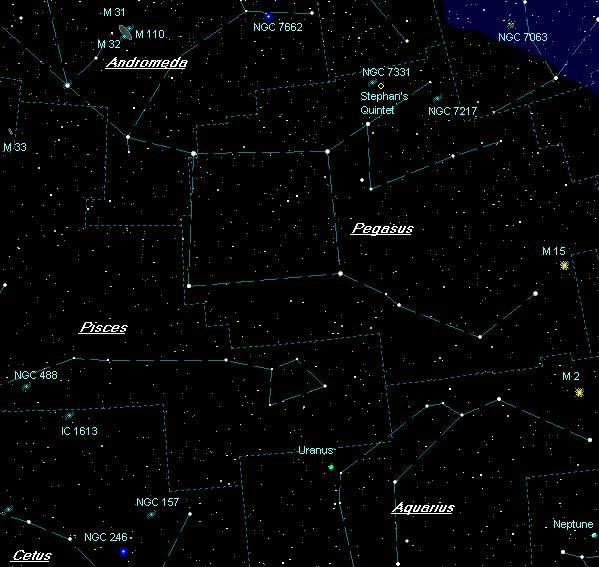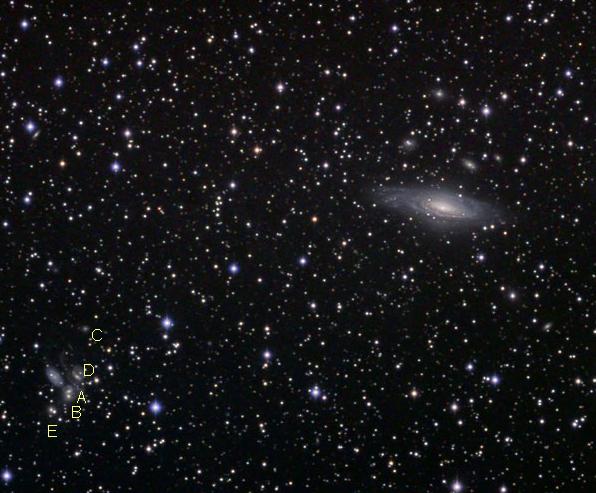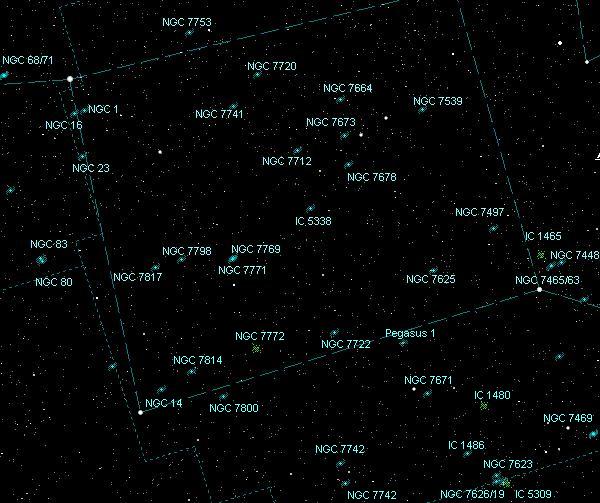The Winged Horse
Looking like a giant celestial baseball diamond, the Great Square of Pegasus stands proudly in eastern skies. Mythology has it that Perseus the hunter, along with Andromeda who he recently saved from the sea monster Cetus, rode off on this winged beast. As early fall nights slowly announce themselves with earlier sunsets and cooler temperature keeping mosquitoes at bay, telescopes should be working overtime, as Pegasus is peppered with faint galaxies.
As twilight comes to an end, I love to just look up and welcome each star as they introduce themselves, one by one. About an hour after sunset, the faint misty band is glimpsed. Poised overhead is the majestic Milky Way, the glow of millions of our galaxy’s stars. As the sky darkens, even more, you cannot help but stare at this marvel. This haze can be followed as it stretches down to the heart of the galaxy, nestled between Sagittarius and Scorpius.

With the eleven night observing window from September 5th to the 16th, moonlight will not hamper your all-night observing sessions. Every night dishes us a multitude of objects – some bright with detail along with tiny grey smudges. Starting off any observing session is our closest galaxy in Andromeda. At an incredible distance of 2.9 million light-years (ly), this prize winner can be spotted with only your eyes from a dark site.
Catalogued M31 or NGC 224, the Andromeda Galaxy is astounding in any instrument from binoculars to large aperture telescope. Flanked by its two satellite galaxies more commonly referred to as M32 and M110, M31 measures three degrees or six full moons in width. With moderate to large telescopes, many globular clusters in this distant galaxy can be spotted.

With M31 being almost nine degrees above the bright star Mirach, move down from this star by seven degrees and you will come to the face-on bright galaxy aka M33. List at about the same distance as the Andromeda Galaxy, M33 (located on Triangulum, glows at seventh magnitude and is fascinating to study with a large aperture telescope. There are no less than seven catalogues IC objects embedded in this galaxy.
Moving to the other side of this constellation if the bright and highly resolved globular cluster M15. It rests some 33,600 ly away and is under naked eye detection at magnitude 7.5. Aside from M13, this globular is second in its category on my favourites list. It is moving toward us at 175 km/sec but the sky is not falling yet. At this rate, it will reach us in 100 million years.
Dropping down thirteen degrees, you will find another gem just as bright and 3,400 ly farther. M2 is another well resolved globular cluster that contains an estimated 150,000 stars in an area some 175 light-years across.

Venturing deeper in the cosmos, look for NGC 7331 aka the Deer Lick Galaxy. At a decent magnitude of 9.5, it is a wonder Charles Messier did not add it to his popular list. Back in 1959, astronomers witness a galaxy loose one of its members in the form of a magnitude 13.5 supernova. Of course, it actually blew up some three million years ago. This has been the only event of its kind in that distant galaxy.
Once you finish with this elongated galaxy and feel adventurous, move a half a degree to the west and try to spot Stephan’s Quintet. This is a collection of five closely knit faint members and can be quite a challenge to find. According to the Chandra X-ray Observatory, the four faintest members (A, B, D, and E) seem to lie an amazing 280 million ly away while the brightest and largest member in the photo is a foreground object only 35 million ly from us. But if you add component C then we are back to the family of five at that great distance. Surely some of the farthest galaxies you can see in a telescope.
For a complete change of pace, NGC 7772 is a faint but loose open cluster. There seem to be only a dozen members of this group. NGC 7772 is a little more than five degrees west of the square’s corner star Algenib. At a distance of 335 ly, this evolving subgiant is listed as a hot B class star believed to have a surface temperature of 21,500 degrees Kelvin. Within the confines of the Great Square, lie literally dozens of remote galaxies, too many to mention in this article. You definitely have a few nights' work tracking down these objects.
Well, we have officially said goodbye to the planets Venus and Saturn as they disappeared into the Sun’s glare. What a great show they put on for us but they will be back soon enough. In the meantime, the king of planets – Jupiter is sinking in the west. With such a low elevation as seen from Canada combined with upper air turbulence, great observations were few and far between.
We do have three other planets available for your viewing pleasure. Neptune can be spotted in the constellation Capricornus at magnitude 7.8. Any telescope will show a featureless bluish disk which is some 4.4 billion kilometres away and its light takes four hours to reach us. Moving down twenty-seven degrees on the east on the ecliptic is the bluish-green disk or Uranus. Although a bit closer at 2.9 billion kilometres, its light travels 162 minutes till it reaches us.
This is, of course, the year of Mars and also the year of the great hoax. I don’t know how the notion of the red planets will be as large as the Moon when it will be closest but that is utterly false. It will only be a tiny fraction compared to the Moon.
Mars is up around 11 p.m. locally and is a mere four degrees north from Aldebaran – the eye of Taurus the Bull. What a sight seeing this pair climb the eastern sky with the Pleiades not too far away. Mars will be closest to the Earth on December 18th at a distance of 88.5 million kilometres and will be at its brightest on December 24th. Wow-what a Christmas present that will be.
We do have three other planets available for your viewing pleasure. Neptune can be spotted in the constellation Capricornus at magnitude 7.8. Any telescope will show a featureless bluish disk which is some 4.4 billion kilometers away and its light takes four hours to reach us. Moving down twenty-seven degrees on the east on the ecliptic is the bluish-green disk or Uranus. Although a bit closer at 2.9 billion kilometres, its light travels 162 minutes till it reaches us. This is, of course, the year of Mars and also the year of the great hoax. I don’t know how the notion of the red planets will be as large as the Moon when it will be closest but that is utterly false. It will only be a tiny fraction compared to the Moon.
Mars is up around 11 p.m. locally and is a mere four degrees north from Aldebaran – the eye of Taurus the Bull. What a sight seeing this pair climb the eastern sky with the Pleiades not too far away. Mars will be closest to the Earth on December 18th at a distance of 88.5 million kilometres and will be at its brightest on December 24th. Wow-what a Christmas present that will be.
Until next month, clear skies everyone
Gary Boyle
| Object | Type | Magnitude | R.A. | Dec. |
|---|---|---|---|---|
| IC 1465 | Open Cluster | 23h 03m | +16° 35' | |
| IC 1613 | Spiral Galaxy | 9.0 | 01h 05m | +02° 07' |
| IC 5338 | Spiral Galaxy | 13.0 | 23h 37m | +21° 09' |
| M 110 | Elongated | 8.0 | 00h 41m | +41° 44' |
| M 15 | Globular Cluster | 6.4 | 21h 30m | +12° 12' |
| M 2 | Globular Cluster | 6.5 | 21h 34m | -00° 47' |
| M 31 | Elongated Galaxy | 3.5 | 00h 43m | +41° 16' |
| M 32 | Round Galaxy | 8.5 | 00h 43m | +40° 55' |
| NGC 1 | Elongated Galaxy | 13.0 | 00h 08m | +27° 46' |
| NGC 14 | Round Galaxy | 12.0 | 00h 09m | +15° 52' |
| NGC 157 | Elongated Galaxy | 10.4 | 00h 35m | -08° 21' |
| NGC 16 | Elongated Galaxy | 12.7 | 00h 10m | +27° 47' |
| NGC 23 | Elongated Galaxy | 12.4 | 00h 10m | +25° 58' |
| NGC 246 | Planetary Nebula | 8.0 | 00h 47m | -11° 50' |
| NGC 488 | Elongated Galaxy | 10.2 | 01h 22m | +05° 18' |
| NGC 68 / 71 | Round/Elong Galaxies | 13.1 | 00h 19m | +30° 07' |
| NGC 7063 | Open cluster | 7.0 | 21h 25m | +36° 32' |
| NGC 7217 | Round Galaxy | 10.2 | 22h 08m | +31° 24' |
| NGC 7331 | Elongated Galaxy | 9.5 | 22h 37m | +34° 27' |
| NGC 7448 | Elongated Galaxy | 11.7 | 23h 01m | +16° 02' |
| NGC 7465 | Round Galaxy | 13.0 | 23h 02m | +16° 01' |
| NGC 7469 | Round Galaxy | 11.9 | 23h 04m | +08° 55' |
| NGC 7497 | Elongated Galaxy | 13.0 | 23h 10m | +18° 14' |
| NGC 7539 | Round Galaxy | 13.0 | 23h 15m | +23° 43' |
| NGC 7623 | Elongated Galaxy | 12.4 | 23h 21m | +08° 27' |
| NGC 7625 | Round Galaxy | 12.1 | 23h 21m | +17° 17' |
| NGC 7662 | Planetary Nebula | 9.0 | 23h 26m | +42° 36'" |
| NGC 7664 | Elongated Galaxy | 13.0 | 23h 27m | +25° 07' |
| NGC 7671 | Elongated Galaxy | 12.7 | 23h 28m | +12° 31' |
| NGC 7673 | Elongated Galaxy | 12.7 | 23h 28m | +23° 38' |
| NGC 7678 | Round Galaxy | 12.8 | 23h 29m | +22° 28' |
| NGC 7712 | Round Galaxy | 13.0 | 23h 36m | +23° 39' |
| NGC 7720 | Spiral Galaxy | 12.6 | 23h 39m | +27° 05' |
| NGC 7722 | Round Galaxy | 13.0 | 23h 39m | +16° 00' |
| NGC 7741 | Elongated Galaxy | 11.4 | 23h 44m | +26° 08' |
| NGC 7742 | Round Galaxy | 12.5 | 23h 45m | +10° 49' |
| NGC 7743 | Round Galaxy | 11.2 | 23h 45m | +09° 59' |
| NGC 7753 | Round Galaxy | 13.0 | 23h 48m | +29° 32' |
| NGC 7769 | Round Galaxy | 12.1 | 23h 52m | +20° 12' |
| NGC 7771 | Elongated Galaxy | 12.3 | 23h 52m | +20° 10' |
| NGC 7772 | Faint open cluster | 12.1 | 23h 52m | +16° 18' |
| NGC 7798 | Round Galaxy | 12.7 | 00h 00m | +20° 48' |
| NGC 7800 | Elongated | 13.0 | 00h 00m | +14° 52' |
| NGC 7814 | Round Galaxy | 10.5 | 00h 04m | +16° 12' |
| NGC 7817 | Elongated Galaxy | 12.0 | 00h 04m | +20° 48' |
| NGC 80 / 83 | Round Galaxy | 12.1 | 00h 22m | +22° 24' |
| Stephan’s Quintet | Galaxy Group | 12.7 to 13.6 | 22h 36m | +33° 59' |
